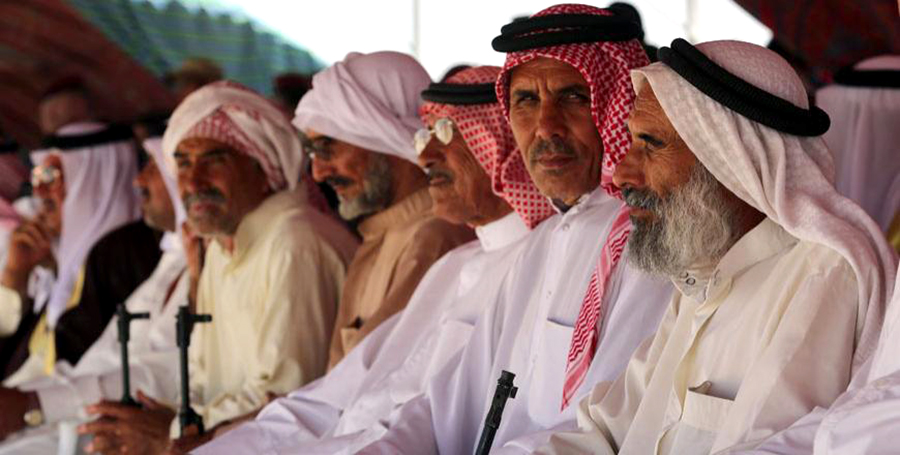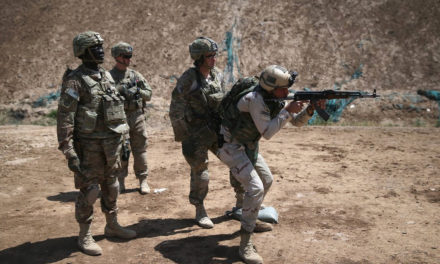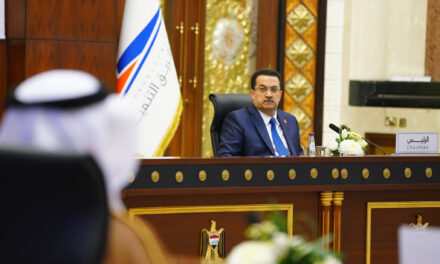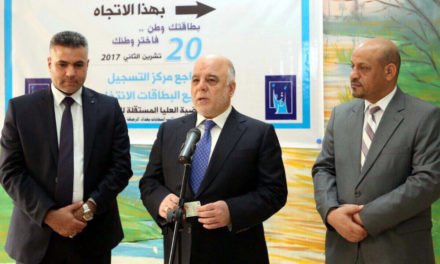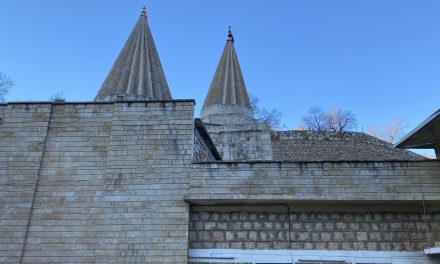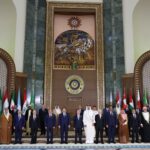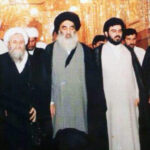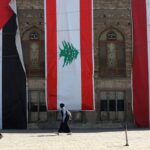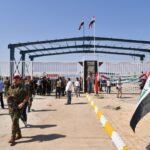“We had a very poor understanding of the divisions within the tribes, the fact that tribes are not monolithic entities, that there are subentities within tribes, and we didn’t really understand how the insurgency overlaid onto the tribes, and vice versa. For instance, if the Albu Fahad tribe exists as a monolithic entity, then you would assume that every Albu Fahad joins one insurgency, one insurgent group. Of course [that was] not the case, and the Albu Fahad is broken down into many subtribes, and clans, and families, and things, and you actually had an intra-communal war in 2006 between Albu Fahad members.”
“The former regime identified over 7,380 Arab shaikhs; many were “fake” shaikhs given their title by Saddam Hussein.”
This article covers the recent history of a small sample of the prominent Sunni tribes and sub-tribes of Iraq. Some major episodes of this history are not covered, such as the rebellion of the Albu Mahal tribe against Tanzim Qaidat al-Jihad fi Bilad al-Rafidayn (Al Qaeda´s affiliate in Iraq, later Islamic State of Iraq, now IS) in 2005. This was partly related to a conflict with the nearby Karabila tribe, who gained land under Saddam Hussein at the expense of the Albu Mahal.
In some cases, these transformative episodes still shape the landscape in Sunni majority provinces: one Karbuli sheikh noted in 2014 how ISIS’ victory in Al Qaim had been excellent for the local population, but presumably a disaster for men of the Albu Mahal who had once confronted terrorism. But even this does not mean the Karbuli, or any tribe, is a tribe of “daesh” or Saddamism– the Karbuli appear to have had their own civil war over support for terrorism, claiming the life of Sheik Adbul Rahman Jawhar al-Karbouli who was assassinated in 2007 after denouncing Al Qaeda. Another notable omission here is the prominent role of the small Albu Risha tribe, who played an outsized role in the Anbar Awakening.
As the quotes above serve to illustrate, we cannot generalise about Sunni tribes after decades of upheaval and the displacement of tribal leaders over the years under Saddam, and the empowerment of new sheikhs under both Saddam and the US fostered Sahwa or “Awakening” program. This piece is subsequently not intended as a “guide” to these tribes, neither does it argue for US or Iraqi government funds to create a Sunni “tribal force.”
Reliance on the influence and power of sheikhs, or “wasta,” will only go so far. A tentative lesson for the present day is that individual actions demonstrating commitment to fighting terrorism are more important than than tribal status, since some sheikhs have a history of changing sides several times or acting only to win contracts.
On an individual basis, many Sunnis in Iraq have given their lives to work with pro-government forces and eradicate al Qaeda and Daesh from their towns. The problem is that many of these efforts have not represented national level reconciliation, weakening them to a resurgent Islamic State of Iraq after 2011. Today, the efforts of Iraqi Sunnis to confront terrorism have re-started, fuelled by the bitter experience of seeing salafist jihadist fighters murdering their citizens, but it is important to note that many Sunnis have consistently fought against salafist terrorism in Iraq. Now that these efforts have united with the Iraqi government to help liberate many towns and villages, it could spell the end of ISIS, provided the government can provide an excellent level of security for allied Sunnis in liberated areas.
This has to be an Iraqi effort: arguably, the lesson of the Sahwa is that a foreign implemented series of local reconciliation efforts with segments of Sunni tribes is not sustainable. Today, the Iraqis may have found their own version of the Sahwa, and ISIS have great reason to fear this. But it could be easily undermined politically if the Coalition support this effort too closely, rather than supporting Iraqis taking the lead in joining hands against terror.
A number of commentators have continued to argue that to defeat ISIS in Iraq, what the US must do is once again “arm the Sunni tribes” and replicate the Sahwa. Certainly, at its peak the Sahwa movement, in tandem with US forces had a devastating effect on the Islamic State of Iraq, often referred to at the time as Al Qaeda in Iraq, or AQI. Recall how suicide attacks dropped off between 2008 and 2011. A plethora of political problems relating to the legacy of Saddam and the rise of ISIS ensured that this arrangement could not be sustained.
Today, perhaps the best course for the Iraqi government is to integrate tribal fighters into existing federal government forces as quickly as possible, rather than create new units such as the long stalled National Guard plan. Popular Mobilization Unit/ Hashd al Shabi efforts to work with Sunni fighters must be formalised with the PMUs who remain in the service of the Iraqi government, and continued long after ISIS recede from towns such as Ramadi. Only difficult negotiations, already underway, can expand the handshake agreements in towns like Dhulouiya and Ameriyat al Fallujah in the aftermath of June 2014.
In liberated areas, it is imperative that the Iraqi government anticipate a determined effort from ISIS to re-infiltrate and attack police officers and their families. Arguably, the path to ISIS control of an urban area does not begin with waves of car bombs and ground attacks, it starts with the careful targeting of police officers, eroding government support and destroying law and order. ISIS will focus on attacking the families of Sunni police officers to rebuild local control, and this will be very easy if government support is slow to arrive, or if police wages are held up, as has happened in the past. Shi’a Ministry of Interior forces must be present to help prevent this from happening, alongside Iraqi Special Forces, some of whom may now revert to their intended counterterrorism role, helping Sunni police to identify and pick off ISIS infiltrators.
Conflict within 8 tribes
The Jubbour tribe
Salahaddin, home to Saddam’s home town of Tikrit, was a bastion of regime strength during the Baath period, with Saddam’s Albu Nasser tribe located in a district of the same name near Tikrit. During the Iran-Iraq war, an estimated 50,000 Jubur were members of the Republican Guard, and Saddam poured largesse onto these mostly loyal regions. After the 2003 invasion, Abdullah Hussein Mohammed Jebara al-Jubouri, a former Brigadier General and high ranking (Firqa level) Baath party member, went on to become the deputy governor of the province, from 2004 to 2009, until he was de-Baathified and banned from running in the provincial elections.
According to the State Department leaked Iraq cables (wikileaks) Abdullah Hussein’s de-Baathification stemmed in part from an internal struggle within the Jubbour, rather than a sudden realization of his past. The Jubbour remained powerful in Salahaddin after 2003, in part because most of the tribal leadership encouraged Sunnis to vote, while other tribes in the province boycotted the 2005 elections, and Abdullah and his brother worked closely with the Americans from 2003 onwards. Other Jubbouris rode a wave of political intrigue to maintain relations with both Maliki and Abadi’s government. These relations endured in the face of challenges such as a November 2011 mass arrest of 600 suspected Baathists and the province’s subsequent gambit to become a region.
Throughout this turmoil, ISIS predecessors the Islamic State of Iraq (ISI) and related insurgent groups assassinated key local leaders and tribesmen, following the near defeat of the terrorists by Sahwa forces in the province during the 2007 “awakening.” The assassination campaign against the Sahwa after 2011 has been documented in detail by Craig Whiteside, who makes a low estimate of 1,345 Sahwa leaders assassinated by IS since 2009.
Because of massive losses between 2006 and 2008 following the US “Surge” and the Sahwa, ISI complimented the targeting of Sahwa fighters by conserving power for high profile attacks, such as the March 2011 government centre massacre in Tikrit. The twin strategy of eliminating Sunni opposition while playing on Sunni fears of a pro-Iran govt. enabled the terrorists to erode control in Sunni majority provinces. A major 2012 prison break in Tikrit was a sign of the coming security collapse of 2014.
After 2007’s local successes against ISI, the Sahwa in Salahaddin were increasingly weakened through payroll disputes with Baghdad, political pressure in the aftermath of the Huwija shootings in 2012 (a key Huwija protest leader was from the Jubbour) and ISIS assassination campaigns. Caught between these forces, they could not hold off the ISIS onslaught of June 2014. Despite this, the long term efforts of many Jubbouris to work with the post 2003 order created some striking developments. By the spring of 2015, the mayor of Huwija, Sabhan Khalef Ali al-Juburi, under threat from ISIS, joined forces with pro government Popular Mobilization Units, noting “One day Iran was our enemy, but now Iran is helping us fight our enemy.”
The Jubbour tribe’s complex history hopefully demonstrates the problems of making generalizations about Iraqi society. Prior to the ISIS assault, Sunni political infighting in the province saw a succession of different governors after 2009, but it was a Jubbouri, Ahmed Abdullah, who won the most votes in the provincial elections of 2013, and went on to join the Council of Representatives in 2014. Abadi terminated his ministerial position as part of his initial wave of reforms.
Saddam era to 2016
Relations between the Jubbour (some of whom are Shi’a) and the regime deteriorated following a row between prominent Sheikh Mishan al Jubbour and Uday Hussein over a business venture, and later a land dispute in Zawiya resulted in a reportedly large gun battle between the regime and local Jubbour gunmen. As relations worsened, following Sheikh Mishan al Jubbour’s public protest at poor government health services, a number of plots within the Jubbour were fomented against the regime, culminating in the execution of Sheikh Mishan’s brother, reportedly carried out by placing dynamite in his mouth.
Fearing more rebellion and assassination attempts from the Jubbour, Saddam then tried to reduce the presence of Jubbour tribesmen in his security services. Even considering this, Mishan al Jubbouri has been accused of opportunism, joining the Iraqi opposition in the 1990s but supporting the anti-government insurgency after 2003. By 2010, Mishan was in Damascus, saying in an interview with Al Rai TV that he would support anyone going to Iraq to kill Americans, including support for Baathists. Speaking in an interview with Der Spiegel in 2003, it is possible that Sheikh Jabara al Jubbouri is referring to Mishan’s exile from Iraq when he noted,
“The Americans show no consideration at all for laws and traditions. They break into our houses, smash doors, rummage through our wives’ bedrooms. … No one knows where Saddam is hiding. But certainly not here in this region which he feuded with. I think he’s still somewhere near Baghdad. …This so-called governing council doesn’t speak for Iraq. Many of its members have come out of exile and are former thieves, highwaymen and swindlers with criminal records, who are now pushing their way into high positions. I don’t know anyone who supports this club.”
Sheikh Jabara al Jubbouri’s anti-American, anti-Iraqi exile view was only half the picture of a divided tribe. Even the Baathist insurgency in Salahaddin became so fragmented that by 2009, there were two factions, one loyal to Muhammad Yunis Ahmed, who were trying to re-enter politics, the other (more hardline) loyal to former Baath Command Council Vice Chairman Izzat al Duri. To one local government official, insurgents meant loss of law and order, as Tami al Jubbouri, condemned both insurgents and US troops in this Oct. 2005 AFP report. The official’s lack of enthusiasm for the insurgents was being played out across Sunni areas in Iraq through 2005 as Salafist jihadi radicals came to dominate what was for the most part a Baathist insurgency.
Less than a year after Tami al Jubbouri’s statement, a prominent cleric in Dhulouiyah, Nadhim Khalil, had joined the ISI and became locally feared, before rapidly switching sides to the Sahwa project when he saw the tide of the war changing. In 2009, Khalil’s past caught up with him and he was arrested, a development praised by Jubbouri Sheikh Abdullah al-Jabbouri.
The hatred of ISIS among many Jubbour is rooted in this recent history, and helps explain Dhulouiyah’s resistance to Daesh in the summer of 2014. Two targetings of Sheikhs prior to the Awakening movement in Salahaddin were critical in changing the insurgency there. Firstly the early 2006 assassination of Sheikh Ahmad Mehdi Saleh al Jubbouri in Hawija (killed at the same time as a police Colonel from the Obeid tribe) and later in 2006 the kidnapping of Ahmad “Naji” Hussein Ajabarah al Jabouri, head of the Salahaddin Sheikh’s Council and brother of Abdullah al Jubbouri.
By 2007, it is clear that groups loyal to the Islamic State of Iraq saw Jubbouri leadership as a serious threat, killing Salahaddin Sahwa leader Sheikh Muawiya Jebara in a car bomb attack in October of that year, part of a wave of attacks against Sahwa members in Salahaddin. But just as the Sunni political and tribal leaders in Salahaddin were concerned with the threat of ISI, internal political disputes were just as pressing. Leaked State Department cables describe continual jockeying for contracts, allegations of intimidation and corruption.
Meanwhile, the pattern of ISI violence against any cooperation with the Iraqi government continued in Tikrit. In January 2011, a suicide bomber killed more than 60 men lining up to join the police, the kind of atrocity that would have helped cement hatred of the terrorists, while the government centre massacre, which killed former deputy governor Abdullah Hussein Mohammed Jebara al-Jubouri and 60 others, is yet another example.
Subsequently, when ISIS tore through the province in June 2014, many Jubbouris saw them as invaders, and quickly made contact with the PMU who had rushed to halt the ISIS advance. In the wake of the killing of at least 1700 Shi’a cadets at the Speicher massacre, one Sheik, Khames al-Jebbara provided shelter and fake IDs to fleeing Shias (identifying them as Sunnis.)
Another tribesmen, Omar al-Jebbara, described the new alliance with the PMU in The Washington Post: “We wanted to make sure every [Sunni] volunteer had a clean sheet. And we wanted to make sure they (the PMU) could guarantee our future so we don’t become easy prey.” (for ISIS.)
Therefore, just as some commentators predicted the imminent sectarian meltdown of Iraq, the villages of Alam and Dhulouiya became front lines of a desperate cross sectarian effort to stop Daesh. While this was happening, some Jubbour tribesmen were aware of local tribes, such as the Albu Ajeel (from the district of the same name) assisting ISIS. As Tikrit was liberated in 2015, homes of the Albu Ajeel were burned, an act many immediately blamed on the PMU. In fact, this appears to have been the culmination of the long intra-Sunni feud that erupted in Salahaddin and elsewhere after 2003.
Despite this great tension, Badr Organization leader Hadi al Ameri met with Sheikh Kareem al-Nida of the Albu Ajeel following the Tikrit liberation, in what the Sheikh said was a “fruitful meeting” following the issue of house destruction. Therefore, even with a tribe such as the Albu Ajeel, it is dangerously simplistic to characterise them as being entirely pro-Daesh, or unrepentantly Baathist. Before the ISIS offensive, the area of Ajeel was thought to have a population of 20,000 and at a demonstration following the death of Saddam, there were reportedly only 400 attendees, who were stopped by police from entering Tikrit.
The Shammar tribe
By most accounts, the massive Shammar confederation that spans Salahaddin to Mosul and has branches in Syria and Saudi Arabia (in addition to a small Shi’a minority membership) enjoyed a degree of patronage during the Baath regime. While sums mentioned are small, they would have been very significant during the sanctions era, with one Sheikh, Bassem Abed Al Shammari, receiving $2000 a month from the regime to distribute to families from the tribe in Mosul. This favourable treatment from Saddam could well have influenced widely reported rejection of the post 2003 political order among Shammar tribesmen, who are often described as strongly nationalist. Even Ghazi al Yawar, the prominent politician and Sheikh from the Shammar who joined the Iraqi governing council during the CPA, rejected the 2005 constitution despite being widely described as a moderate.
Subsequently, by the time of the first insurgent uprising in Mosul in May 2004, local Kurds said that many members of of the Sunni insurgency and local police were from the Shammar, a problematic situation in terms of policing terrorism.
This led the US to attempt a roll out the Sahwa program to the Shammar tribe in Salahaddin in late 2007 following the formation of the Salahaddin support council, which involved more than $5 million dollars in reconstruction contracts for Sheikhs willing to report or detain insurgents and terrorists. By 2007, serious divisions in the Shammar tribe were developing, and Sheikhs such as Ghazi al Yawar who worked with the coalition had long been on Baathist insurgent and ISI hit lists. But as with other Sunni sheikhs who came to reject terrorism, one prominent member of the Shammar, Sheik Sabbah Shamari, simply disagreed with the draconian and brutal control of al Qaeda, noting,
“They have turned religion upside down. The one who smokes gets killed. The one who doesn’t pray gets killed. The one who drinks gets killed. The one who wears traditional Arab dress gets killed. And all these things are part of me and my personality.”
Nonetheless, Shiekh Sabah’s newfound alliance with the Americans made him local enemies, and according to one report Sheikh Abdullah al Jubbouri tried to have him arrested. It is unclear whether the Sheikh was simply not trusted, or whether Jubbouri knew he still had ties to the insurgency, or whether this was simply a battle over lucrative reconstruction and Sahwa salary money.
As Sheikh Sabah was making a foothold in the Sahwa movement in Salahaddin, dangerous tensions were emerging between Kurds and Sunnis in Ninewa. Shammar leader Abdullah al Yawar complained of problems between local Sunnis and Kurds loyal to the KDP. According to a leaked 2005 US cable, Sheikh Yawar “regularly complained to the PRT since 2005 of aggressive KDP actions against the Sunni community. The complaints include arbitrary arrests, detention of Ninewa residents in the KRG, blocked access to medical care and manipulation of local government posts. Abdullah is always careful to point out that he has no problem with Kurds in general, but rather with the KDP, which he sees as a tool of control over Sunni Arabs in western Ninewa.”
Maliki appears to have attempted to capitalise on this tension in the run up to elections in 2009, pushing for former General Riad al-Chakerji to be governor of the province. Al Chakerji was a key ally of Sheik Abdullah al-Humaidi, a prominent local Sheikh from the Shammar. This supposedly planned coalition appeared not to come into fruition, probably due to enmity between Atheel al-Nujaifi and Maliki, and long standing tensions in Ninewa with federal security forces, which continued to deteriorate in the run up to the fall of Mosul.
But the tension between Kurds and Sunnis described by Abdullah al Yawar did not stop Shammar tribesmen forming a rapid and close coalition with Kurdish fighters in the face of the ISIS and Nusra threat in the border area. Critical territory has been retaken from ISIS by a coalition of YPG and at least 3000 Shammar tribesmen. Such an alliance was perhaps unsurprising. ISIS appear to have tried to kill Abdullah al Yawar and his family in June 2014, destroying his house in Rabia. Speaking to Emma Sky, Sheikh al Yawar explained that in his view, the fall of Mosul was due to long term rot of corruption, and that this enabled ISIS to slowly take control, and that both Mosul and Baghdad leadership were guilty.
Further south, by November 2014 Sheik Khalid al-Shammari was gathering tribal recruits to join a government force, although he complained the government were unresponsive.
The Dulaim Confederation
Albu Alwan
Like the Shammar, the Albu Alwan have a Shi’a minority branch, some of whom live in Hillah, Babil province, although the tribe is rooted in Anbar. As with many of the major Sunni tribes, Saddam Hussein was careful to cultivate close ties and bestow money and gifts on loyalists such as Sheikh Mohammad Jawad al-Naifus. Sheikh Naifus was apparently awarded a Mercedes and cash for helping crush the 1991 intifada against the Baath regime during which time approximately 100,000 Shi’as are thought to have been killed, in addition to countless thousands of Kurds. According to a 2003 UNHCR report,
“Human Rights Watch identified Al-Naifus, the pro-Saddam Hussein head of the Albu Alwan tribe, as one of the key officials responsible for the executions of thousands of Shi’a civilians around al-Hilla in 1991. Eyewitnesses from the execution sites, as well as from the military base where Shi’a execution victims were detained prior to their death, told Human Rights Watch that al-Naifus and members of his tribe were directly involved in the executions. Following the executions, the land on which the largest mass grave was located was taken from local farmers and given to a member of al-Naifus’ tribe, who was responsible for safeguarding the mass grave.”
This HRW report was also quoted in a 2005 FBI report on the Saddam trial. According to an International Crisis Group report, Saddam’s regime even managed to co-opt Shi’a members of the tribe into the secret police in the Hillah area. Certainly, a key representative from the PMU in Anbar, Ziyad Alwani is a Shi’i and reportedly was an officer in the former regime army, although his appointment apparently caused some discontent among Anbari Sunnis.
Following the invasion, some Sheikhs of the Albu Alwan tried to reach out to US forces (Naifan was arrested, then accidentally released, to the fury of many Shi’as.) In 2003 Sheikh Hamid Rashid Mahenna from the tribe won a $35,000 reconstruction contract, part of a concerted US State Department effort to win the peace. While this effort succumbed to the strategic rift between the US military and State Department in Anbar, other prominent members of the Albu Alwan were able to thrive in the post 2003 political order, such as Ma’moun Sami Rashid al-Alwani, who became the governor of Anbar in 2005, and survived numerous assassination attempts by various insurgent groups.
Nonetheless, the Albu Alwan were later identified as one of the last tribes to join the “Anbar Awakening,” although this may have also been related to a rivalry between some Sheikhs and Awakening leader Abu Risha. By Mark Moyer’s account, the Albu Alwan were strong in the center of Ramadi, but did not establish a rapport with the US Marines, who focused on defending the main roads and government compound with Sahwa forces from other tribes.
However, some leaders of the Albu Alwan did eventually join the Sahwa project. Raad Sabah Alwani was working with the Americans by 2008, by which time violence in Ramadi had fallen dramatically and the ISI had been routed from the city. This was largely because of the Awakening movement, which coordinated intelligence with the Coalition and Iraqi army for raids against ISI cells. In a similar way today, many Sunnis allied with the government provide an intelligence role akin to local guides, rather than front line fighting.
This alliance drew the attention of the ISI as they sought to regenerate after 2011, focusing a long campaign of assassination against former Sahwa members, or co-opting others, and exploiting sectarian tension following incidents such as the arrest of controversial anti-government politician Ahmed al Alwani. (Contrary to some reports, the clearing of protest sites in Ramadi by government forces was done with the consent of some Anbari politicians, although Maliki would have done much better to focus on Fallujah, and probably exacerbated the security crisis by labelling the Ramadi site an Al Qaeda encampment, allowing the Fallujah situation to deteriorate further.)
By the time Sunni tribes had begun rallying against ISIS in late 2014 and early 2015, the Albu Alwan were in an advanced state of intra tribal conflict. As Sheik Aref Mukhbar Sayed Alwany noted in May 2015:
“There are some parts of the Sunni tribes, or certain members, that actually fought with ISIS. Others provided the group with moral and logistical support.”
This split was noted in an International Crisis Group report, which described how some Albu Alwan members were fighting alongside government forces in January 2014, as Fallujah fell to ISIS.
The Albu Fahd
Perhaps inevitably, some of the Albu Fahd leadership were close to the Baath regime. In the years prior to the 2003 invasion and until his assassination on January 16th 2006, Sheikh Nasser Abdul Kareem al Mukhlif is cited as the paramount Sheikh of the tribe, with great influence in the Ramadi area. Sheikh al Mukhlif was a professor of Physics at the University of Anbar, and lost his job there under the de-Baathification program. He was later described in an American tribal study as an “open supporter” of the nationalist insurgent groups attacking the US, while Marine intelligence analyst Alfred Conable described him as “adamantly opposed to the Coalition in 2004.” Another Marine Colonel remarked, “you could probably argue that he was the leader of the 1920 Revolution Brigade.”
Following Sheikh Fahdawi’s assassination by ISI in 2006, his successor Hussein al-Dhaher al-Ali al-Saad was also assassinated by ISI, less than a month later. Leadership then passed to Shaikh Fawaaz Dahaam Haleel, described by a US military report on the tribes as being a former member of “Saddam’s inner circle” and an insurgent financier who amassed wealth from government contracts during the Baath period.
The fate of Sheikh Mukhlif was probably sealed when, in response to local grievances with increasing ISI power and intimidation in the Ramadi area, and probably fearing the permanent sidelining of Sunnis from politics, Mukhlif visited US soldiers to discuss security for the parliamentary elections.
According to Conable, by 2005 Mukhlif “grew tired of the violence and joined together with Mohammed Mahmoud Latif, an Islamic scholar and leader in the 1920 Revolutionary Brigade, to support the December 2005 elections. Additionally, they put together a small coalition of other tribal leaders and former senior officers of the old Iraqi Army, known as the Anbar People’s Committee, to oppose AQI.” The Anbar Peoples’ Committee recruited members from the Albu Nimr and Albu Mahal tribes, helping form the nucleus of the Sahwa (see below).
In what was to become a pattern in Sunni areas, ISI took note of cooperation with US forces, and wrote in an internal communique, “the brothers raided his house in the middle of the night wearing the national guards’ uniform and driving similar cars, they took him and killed him, thank God.” The terrorists note in the same communication that it was hoped the locals would blame US forces for the killing.
This had the opposite effect of terrorizing Albu Fahd members into keeping quiet, and a growing number joined the Sahwa, sparking what one US officer described as an “intracommunal war” within the Albu Fahd. By 2010, with violence far lower in Anbar, another Fahdawi Sheikh, Adil al Fahdawi was describing the Sahwa movement as “our revolution” and campaigning for the 2010 elections in Hamdiyah, north east of Ramadi. This campaigning and involvement in the Sahwa, put the pro-politics side of the tribe back in the sights of ISI, and by early 2015 the Albu Fahd were demanding more support from both the Iraqi government and the US.
While government support may have been slow in coming, some members of the Albu Fahd appear to have aligned themselves with Kata’ib Hezbollah, as in February 2015, following the murder of two men in Anbar (which was blamed on the PMU) Sheikh Hamoud al-Fahdawi claimed (on behalf of KH) that murder allegations were “baseless.”
This early cooperation was not enough to save Ramadi, with Hathal al Fahdawi from the Anbar provincial council noting, “The U.S. played a shameful role. The U.S. promised us Ramadi would not fall” before remarking that the government had not paid salaries for Sunni pro-govt. fighters “for more than four months.” Hathal noted that when some of his fighters saw the strength of ISIS, and realized other Fahdawis were helping them, morale crashed.
In May 2015, shortly after capturing Ramadi, ISIS released an update referring to “Albu-Fahd Sahwa” and noting, “The lions of Al Anbar continue their march to completely cleanse Wilayah Al Anbar [Anbar province] of the filth of the Safawiyyin and their puppets.They assaulted and took control of East Al Husaybah and Al Juwaybah, the stronghold of the Albu-Fahd Sahwah.”
Subsequently, anti ISIS Albu Fahd members launched a counter-attack only days after this statement, striking into their tribal homeland of Husyabah with a mixed alliance of Ministry of Interior forces, tribal fighters and Hashd al Shabi, something confirmed by Sheikh Rafia Abdelkarim al-Fahdawi at the time.
Albu Issa
The Albu Issa tribe are prominent in the Fallujah area. The relations between the Albu Issa leadership and the Baath regime are murky, with one Sheikh, Barakat al Issawi apparently denying an offer of weapons from Saddam Hussein in the run up to the 2003 invasion, claiming instead that his tribe had “missiles.” Barakat was arrested by US forces in October 2003 after being linked to attacks on US troops, including the downing of a CH-47 helicopter that killed 16 Americans.
Another Sheikh, Ghazi al Issawi, claimed to have been jailed by Saddam for 7 years, although he admitted to having met Saddam publicly. Either way, relations with the US forces deteriorated rapidly following two incidents, the first being the April 2003 shooting of 17 protesters by members of the US 82nd Airborne at a demonstration in Fallujah, which was followed by the September 2003 killing of ten local policemen in a friendly fire incident with US forces. This second incident prompted Sheikh Jassim al Issawi to demand that US forces leave Iraq. Security in Fallujah continued to deteriorate until the April 2004 “contractor killings” of 4 Blackwater security personnel in the city, and the ensuing US operations to clear insurgents, the first and second battles of Fallujah.
Some time in late 2003, the US detained a Sheikh, Aifan al Issawi for 9 months in Abu Ghraib, despite there being no charge against him. But upon his release, Aifan went on to become one of the Americans’ closest allies in Fallujah.
In 2004, the US began compensation payments to Iraqi families who had relatives killed by US forces, and Aifan al Issawi took on a liaison role for distributing these funds. Despite being sent to Abu Ghraib, Aifan had previously decided not to join the insurgency after being approached by a group who had Fedayeen Saddam and foreign fighters in their ranks.
Aifan’s subsequent connection with the US inevitably led to him being targeted by insurgents, and he held meetings to discuss organizing resistance to the terrorists in 2004, waging war against them in 2005 before fleeing to Jordan, where the paramount Sheikh (Khamis) of the Albu Issa was based. Aifan returned in 2006, to lead Emergency Response Units in the Fallujah–Zoba area of Anbar (near Abu Ghraib suburb) supported by leading Sheikh Khamis al Issawi and Ghazi al Issawi, actions that led to a failed suicide attack against Khamis in 2005.
These attacks pitted Khamis, Aifan and Ghazi against the Islamic State of Iraq, and for a time, members of the 1920s Revolutionary Brigade, including many men within the tribe. On May 24th 2007, Sheikh Allawi al Issawi was shot dead and at his funeral procession later that day, a suicide bomber killed 27 people.
Aifan continued his efforts with the ERU and went into politics as an MP in 2009, but was assassinated by ISIS in 2013. Despite his killing, Khamis appears to have decided at some point that the government were as much a threat as ISIS, stating that Iraqi forces would only “enter Fallujah over our dead bodies. We are ready and prepared to fight Maliki forces if they decide to begin their offensive on the city.”
But in another example of how complex tribal politics can be, other Sheikhs from the Albu Issa decided to side with the government, with Sheikh Faleh al Issawi supporting Abadi’s National Guard plan in 2014 and Fallujah mayor Faisal al Issawi announcing in February 2015 that the government was going to create a 3000 strong tribal force to join the assault to retake Fallujah. But while Faleh supported Abadi, he rejected working with the Hashd al Shabi.
Prior to this announcement, which took the form of training for a tribal force at Al Taqqadum airbase at Habbaniyah, Anbar, members of the Albu Issa had already been fighting alongside Hashd al Shabi units, including the Ali al Akbar Brigade in the Ameriyat al Fallujah area. But in a sign of how complex Iraq’s battlefields have become, Kataib Hezbollah clashed with locals from the Albu Issa tribe in Ameriyat al Fallujah in May 2015.
By June 2015, Sheikh Abdullah al Issawi was complaining about late salaries for his men training at the Habbaniyah base (although the report noted the salaries later came through.) Another Sheikh in Ameriyat al Fallujah, Shaker al Issawi complained that the government in Baghdad treated his fighters “like foreigners.”
Albu Assaf
Relations between the Albu Assaf and the Baath regime, by the account of some Assafi sheikhs, appear to have been strained, and two Assafi sheikhs claim that Saddam’s creation of “fake Sheikhs” denied the Assaf of influence in the latter part of the Baath era. The most notorious Assafi sheikh, Ali Hatem Ali al-Sulayman, often referred to simply as “Ali Hatem” claimed that Saddam had created “450 sheikhs” in Anbar, which constituted interference in what he saw as the long evolved tribal order.
Another sheikh, Ahmad al Assafi, followed this view noting that “Saddam created the 90s sheikhs.” This sentiment possibly explains why the Albu Assaf were early joiners of the Awakening project, keen to rebuild their perceived loss of tribal importance under Saddam. Certainly Sheikh Majed abd al Razzaq Ali al Suleiman was jailed and then exiled by Saddam in 1990, and spent most of that decade with Iraqi opposition groups in Jordan. By 2007, there were many Assafi tribesmen in Anbar’s police forces from Ramadi to Al Qaim, although negotiations by Assafi tribesmen in Baghdad prior to 2007 led to attacks on the tribal leadership by ISI in early 2006.
In the chaotic years in Anbar following the invasion, Ali Hatem seems to have managed to use his position as a Sahwa leader to obtain contracts and Sahwa salaries, gaining muscle within the tribe beyond his actual tribal status. This brought him into conflict with the Iraqi Islamic Party in Anbar in 2008, during which Ahmad Abu Risha (brother and successor to famed Awakening leader Sattar Abu Risha) sided with Tariq al Hashimi and the IIP.
This meant that for a time, Suleiman enjoyed an alliance with Maliki, along with long time government supporter Hamid al Hayes. By 2010, Ali Hatem was running in Maliki’s State of Law coalition, but the alliance was only to last a year, as Ali Hatem’s rhetoric became increasingly hostile to the government following the 2011 protests over the mass detentions of Sunnis and the death warrant for then Vice President Tariq al Hashemi. By 2013, Ali Hatem had joined the Ramadi protest movement and warned that Sunnis wanted “blood” following the Hawija shootings.
This led Ali Hatem to make what was possibly the biggest mistake of his political career, when he seemed to endorse ISIS in the summer of 2014, hoping that they would be a lesser evil until Maliki’s government was toppled by the terrorists. To this end, Ali Hatem noted his forces would “stand with ISIS” until Maliki stepped down. Inside Iraqi Politics’ Kirk Sowell has noted however, that Ali Hatem likely did not command any significant force after 2011, and had he access to such forces, they would have been forced to become ISIS fighters or die. Therefore, Ali Hatem’s remarks can be dismissed as deluded opportunism, as Sajjad Jiyad has pointed out. This brought him into conflict with sheikhs of other tribes, leading to a death sentence being passed against him by some tribal leaders.
Now Ali Hatem has little influence over sheikhs within the Albu Assaf, let alone the vast Dulaim confederation. As the 2014 ISIS offensive took hold, many within the tribe remained with the government, with disastrous consequences, while Ali Hatem had long since left the country. In November 2014, Sheikh Faris al Assafi al Dulaimi explained to Bloomberg how 30 members of his tribe had been massacred along with countless members of the Albu Nimr. Explaining that 1000 tribal fighters had been rallied to counter ISIS, Sheikh Faris noted of those who had been murdered, “the Islamic State believes the people of these tribes were born Muslims but abandoned their religion when they helped Shiites fighting against them.”
Subsequently, Majid Ali Suleiman was supportive of Abadi when he took office. But government help was apparently slow in coming for the Albu Assaf, either due to long term distrust or logistical issues, leading to one Assafi Sheikh to call on Russian support and praise Putin’s bombing of ISIS sites in Syria.
Albu Nimr
The Albu Nimr tribe were largely responsible for what was arguably the biggest threat of Sunni origin to the Saddam regime in the 1990s, being at the centre of an uprising in 1995. The origins of this uprising are complex, but appear to have been sparked by the rape of a general’s daughter, committed by Uday Hussein. This in turn caused a complaint from several senior generals in the Dulaim confederation, who were in turn arrested.
The arrests prompted a delegation of sheikhs to visit Baghdad, who were in turn murdered and apparently sent back to their families in pieces, which sparked clashes from Ramadi to Abu Ghraib, during which time the Albu Nimr led a revolt that also involved some Jubbour members, under the banner of the Armed Dulaymi Tribes’ Sons Movement. With an allied Republican Guard unit, the rebels hoped to release prisoners from Abu Ghraib and take control of a radio station, to spread news of the revolt.
The revolt was crushed by the Fedayeen Saddam, but was the beginning of Albu Nimr contacts with organized Iraqi opposition groups. This experience likely shaped the views of many Albu Nimr after 2003, as the tribe was one of the first to reach out to the Americans in Anbar, prior to any large scale effort like the Sahwa. Supported by a single Special Forces detachment, this effort to help the tribe was far too small to deter ISI killings of tribesmen who helped the Americans. As large scale offensives in Fallujah took place, this early US-tribe cooperation became even more under resourced.
Anti-terrorist Albu Nimr tribesmen appear to have then gone to ground until 2005, when the Albu Mahal tribe formed the Hamza Brigade to fight ISI in Al Qaim, a movement some Albu Nimr joined at great personal risk.
In early October 2014, ISIS pushed the Albu Nimr out of the tribe’s power base in Hit, Anbar, tribal leaders complained that the US Embassy in Baghdad and the Iraqi government had not come to their assistance, but only made promises to help. As many as 600 of the tribe were massacred, with 200 found in one mass grave. Despite this, Sheikh Naeem al-Gaoud vowed to continue fighting ISIS.
Albu Jughaif
Leadership of the Jughaif tribe were among the first to make inroads with the emerging post 2003 political order, and subsequently suffered an early assassination in July 2003, when Haditha mayor Mohammed Nayil Jurayfi was shot dead, along with one of his sons. The mayor had spent much of the 1990s in conflict with the regime and was jailed by Saddam, only taking the position of mayor after 2003 and boasting that he had confiscated the BMW of a senior Baath official. This act, along with his contact with US forces, put him in the sights of Baathist insurgents, who almost certainly killed him.
Assassination did not deter other Jughaif from dealing with US forces, which only heightened conflict with the increasingly brutal, and increasingly foreign led insurgency, as well as bringing the tribe into conflict with other tribes in the area, some of whom accused Jughaifi dominated security forces of arresting people based on tribal rivalry. In early November 2004, insurgents attacked two police stations in the Haditha area, killing over 20 Iraqi police including police Brigadier Shaher al Jughaifi, leading PM Allawi to declare martial law as the second Fallujah assault began.
This atrocity most likely spurred other Jughaif leadership to continue engagement with both US forces and Baghdad, with Colonel Farouq Harden al-Jughayfi playing a notable role in rallying local police forces, to the point where Haditha mayor Abd al-Hakim Muhammad Rashid claimed the police negated the need for a Sahwa force.
Subsequently, US histories of the war in Anbar generally regard the post Awakening Haditha as a major success, especially following the notorious Haditha massacre of 2005. Despite this, the town became dangerously exposed as a weakened Iraqi army increasingly struggled to cope logistically with maintaining security across the expanse of Anbar. In March 2011, 10 Iraqi soldiers were killed by a suicide bomber in the town as they waited at a bank to collect salaries. Far worse was to come, as the emerging ISIS threat gained increasing sanctuary in far flung areas of Anbar, bolstered by the Syrian uprising and widespread Sunni discontent within Iraq. In March 2012, units of ISIS fighters disguised as police and using SWAT vehicles ambushed police checkpoints across Haditha in a filmed raid which killed 27 local police, many of them disarmed and executed. A resurgent ISIS targeted pro-government officials and sheikhs in Haditha relentlessly, blowing up the house of a prominent sheikh in a February 2014 suicide attack.
This was the beginning of a long and dark period for the town, who saw unrelenting chaos following the June 2014 ISIS offensive, which led to Haditha being cut off from re-supply. Colonel Farouq al Jughaifi remains in command of local police as of March 13th 2016.
In conclusion, general statements about arming Sunni tribes to fight Daesh pose the risk of overlooking their complex history of intra-tribal conflict, and could lead to strategies that only create new imbalances within Sunni Iraqi society. Certainly, sheikhs who have a long history of fighting terrorism and being involved in the political process need government support, but this must be done in the context of rallying tribes to encourage membership of federal security forces. Strategies that depend on maintaining the loyalty of self-interested sheikhs, or ones that bypasses the central government, can only be a temporary, tactical remedy, and possibly pave the way for more problems down the line.

Robert Tollast
Robert Tollast is a security and political risk analyst based in London, who focuses on Iraq. He has worked on studies in oil and gas and telecoms in Iraq and the wider MENA region. He has written over 70 articles on Iraq in publications including The National Interest and Foreign Affairs, and he blogs at Iraq Business News. He is currently working on a series of films on the culture, history and economy of Iraq.

